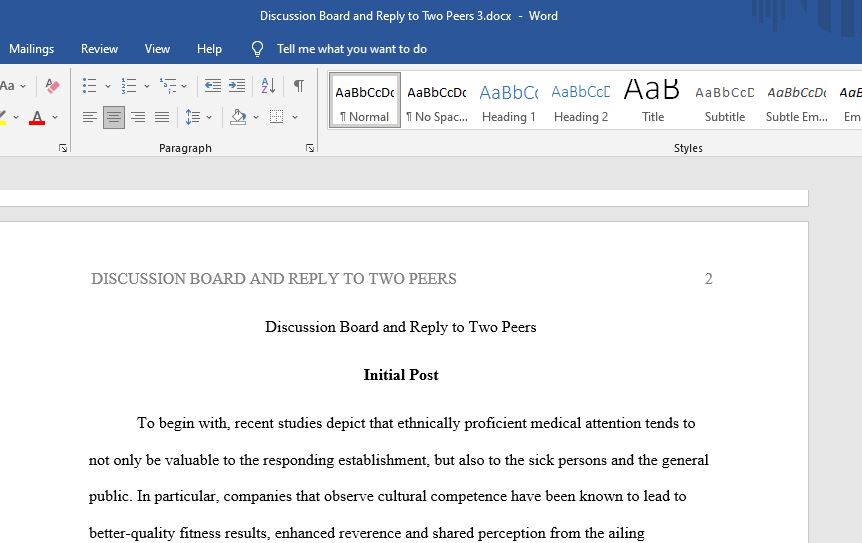Discussion Board and Reply to Two Peers
Cultural competency is an important part of public health. In order to reach our target audience, or those who need health information, we must understand the population’s unique needs. This is especially true during a disease outbreak. After reviewing the Readings for Unit 8, answer the following questions:
- Why is cultural competency important when addressing health problems within a specific population?
- Why is it important to target specific populations with health information they relate to?
- What are some ways to reach the target population using culturally and linguistically competent information?
You may use examples from the Unit 8 Readings. Be sure to include a list of credible references to support your response.
Chanelle Juhasz posted Feb 25, 2021 11:53 PM
This page automatically marks posts as read as you scroll.
Adjust automatic marking as read setting
Good evening everyone!
- Why is cultural competency important when addressing health problems within a specific population? Cultural competency is extremely important when dealing with such a diverse nation. According to the 2010 U.S Census Bureau report, about 35% of the U.S population are minorities. Cultural differences affects the community, beliefs, behaviors, and traditions. This becomes vital when understanding the language barriers you must tend to, the perception of risk, individual beliefs on the government and certain institutions, as well as acceptable forms of communication and rituals (Reynolds, 2014).
- Why is it important to target specific populations with health information they relate to? When targeting specific communities and populations that directly involve them, they are more subject to be open to what is being discussed. The outcomes and medical procedures could directly be affiliated with their dominant traits and statistics. This will also raise awareness within the communities and how it could directly affect them.
- What are some ways to reach the target population using culturally and linguistically competent information? Some of the ways to reach the target population is to understand what they respond to. The RESPOND tool is a great tool to utilize when utilizing culturally and linguistically competent information. The RESPOND tool stands for building rapport, explaining your purpose, identifying services, encouraging individuals to be proactive, offering assistance, negotiating, and determining the next steps (Public Health Emergency, 2020).
References:
Public Health Emergency. (2020). Cultural and Linguistic Competency in Disaster Preparedness and Response Fact Sheet. Retrieved from https://www.phe.gov/Preparedness/planning/abc/Pages/linguistic-facts.aspx
Reynolds, B., PhD. (2014). Crisis and Emergency Risk Communication (United States, Centers for Disease Control and Prevention, Office of Public Health Preparedness and Response (OPHPR)). Retrieved from https://emergency.cdc.gov/cerc/cerccorner/article_040417.asp \
Requirements: 200. replies 100 each
Answer preview:

word limit:422
